DIY- 3 (More) Ways to Paint Quotes on Canvas

In a previous DIY article I outlined my 3 favorite ways to paint quotes on canvas to create beautiful, personalized pieces of art. I got a great response from the article and lots of positive feedback, so I’ve decided to write another! If you haven’t already, check out my post DIY- 3 Easy Ways to Paint Quotes on Canvas.
In this article I share 3 more easy ways that you can add your favorite words, quotes, sayings, or lyrics to canvas. To get started, you’ll need stretched canvas. I like to use a high quality canvas that is stapled on the back rather than the sides, like this Winsor Newton canvas. Next, you’ll need paint. I find that acrylic paint works best because it dries quickly. You can also use spray paint for some of these projects (I like Krylon brand spray paint best). Finally, I recommend using a finishing spray once you’re painting is done to protect it. I use Krylon finishing spray which comes in glossy, satin, and matte (satin is my favorite!).
1. Collage
A fool-proof way to place letters onto a canvas is to attach them collage-style. This style provides a clean look for your painting and is great if you don’t want to hand paint letters. You can use letters or words from a magazine or pamphlet, print out words, or use letter stickers. You can even cut letters out of interesting materials, like wallpaper samples or maps!
Pros: Easy, adds texture
Cons: Longer dry-time, limited with size, colors, and shapes of lettering
What you need:
-
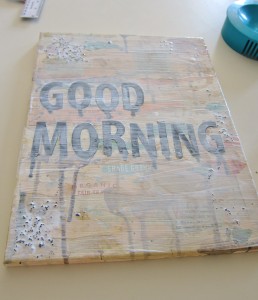
Adding a layer of Mod Podge over the letters Mod Podge (comes in matte or glossy)
- A foam brush
- Letter stickers or cut outs
How to:
1. Paint your canvas the background color of your choice. Make sure the color contrasts with the colors of your letters. Let it dry completely.
2. Place your letters or words on the canvas and check their placement.
3. Coat the back of each letter with Mod Podge and stick it to the canvas. Layer another coat of Mod Podge on top. It will look like a white mess, but I promise- it will dry clear! Let the canvas dry.
4. Layer another coat of Mod Podge over the letters to seal any edges and let it dry. You may need to do this once more to ensure the edges won’t peel up depending on how thick your lettering is.
5. Seal your painting with a finishing spray (optional). The Mod Podge acts like a sealing coat, but I like to use the spray finish at the end to fill in any brush strokes that may be left and make the painting appear more even.

2. Stickers
In my last DIY I explained one way to use stickers to create lettering on canvas. This technique is a little different- I like to call it “reverse stickering.” It gives the canvas a much different look than the other technique, and enables you to create texture and add different colors .
Pros: Simple, creates more texture
Cons: Letters are limited to the size and shape of the stickers
What you’ll need:
- Vinyl letter stickers (Be sure they don’t say permanent. I use these.)
- Paint brush
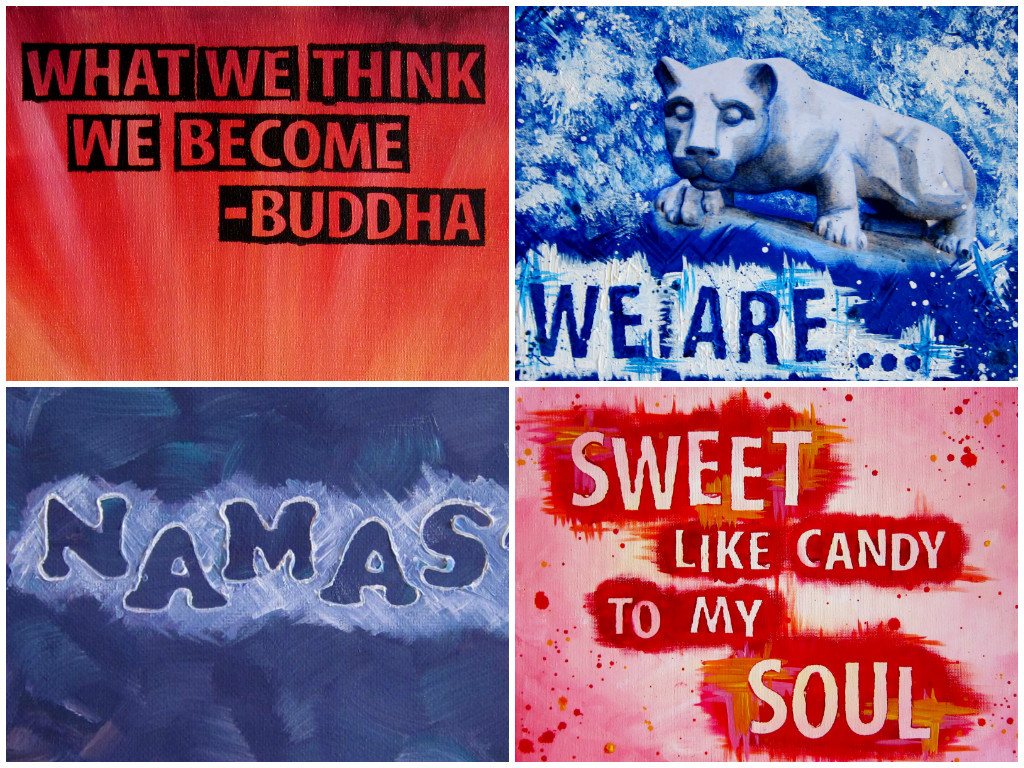
How to do it:
1. Paint the background of your canvas and let it dry.
2. Stick your letter stickers on the canvas.
3. Carefully paint over your letter stickers. Be sure not to use hard brush strokes or you might move the stickers. Don’t be afraid to experiment with different directions of your brush strokes and thickness’s of your paint! Let your canvas dry.
4. Peel the stickers off the canvas carefully, being sure not to remove any paint. (Tip: you can use an old pair of tweezers to help you remove the stickers).
5. Seal the painting (optional).
3. Paint Markers
Paint pens work well if you enjoy handwriting or calligraphy and want to transfer your words to canvas in your own handwriting. They also works wonderfully if you have a lot of writing or very small print to transfer. If it sounds too intimidating to write directly on your canvas, not to worry– you can sketch your lettering on paper or print words from the computer and transfer it to your canvas.
Pros: Quicker than hand painting letters, more control over the size and placement of lettering
Cons: Less choice with color, easier to mess up!
What you’ll need:
- A paint marker in the color of your choice (I use Tree House Studio brand markers, which I find at Hobby Lobby and come in a variety of colors and sizes)
- Carbon paper and regular paper
- A ruler
- Tape
- A pencil and a ball point pen
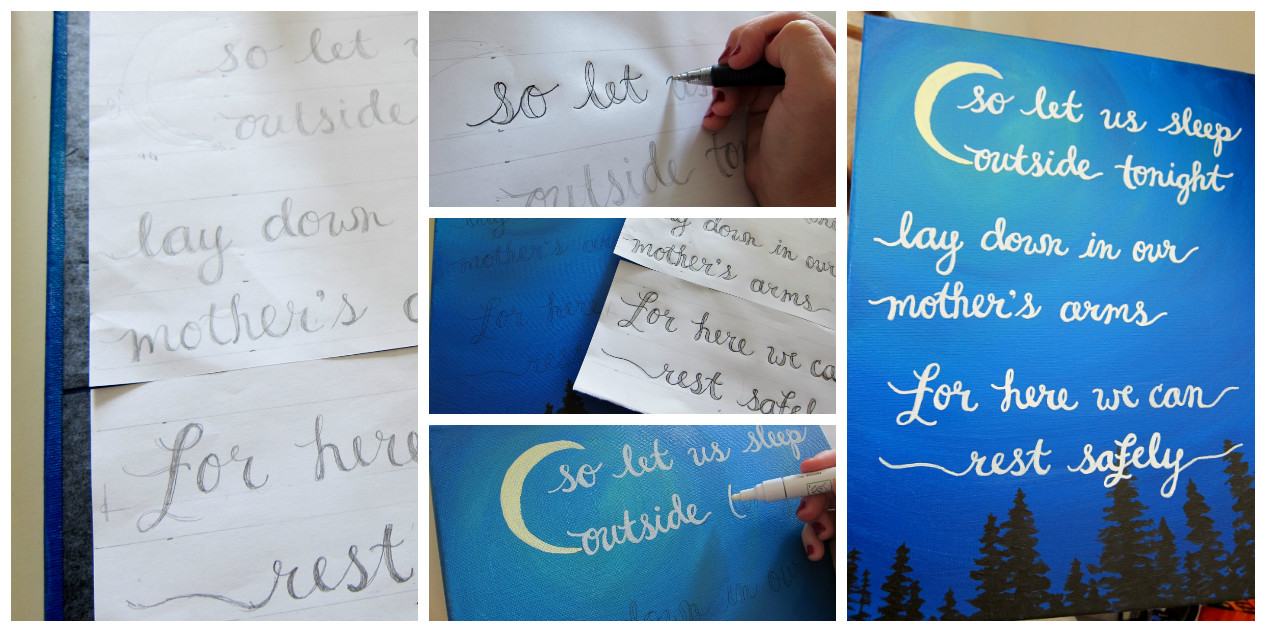
How to do it:
1. Paint your canvas in the background color of your choice and let it dry
2. If you’re going to sketch your lettering first, you’ll be using the same method I outlined in my last DIY article. Use your ruler to measure the size you want the lettering on the canvas and make appropriate sized lines to guide you on a piece of paper. Draw out your lettering on the paper.
3. Place a piece of carbon paper face down on the canvas, place your paper with your lettering on top, and tape it down. Make sure your tape the paper in the position you’d like the lettering- use a ruler to make sure it’s centered.
4. Trace over the letters using a ball point pen, pressing firmly. Untape the paper and carbon paper to reveal your transfer.
3. Using the paint pen, trace over your carbon transfer. If you’re using a white paint pen, you may find you’ll need two coats over the carbon transfer.
4. Seal the painting (optional).
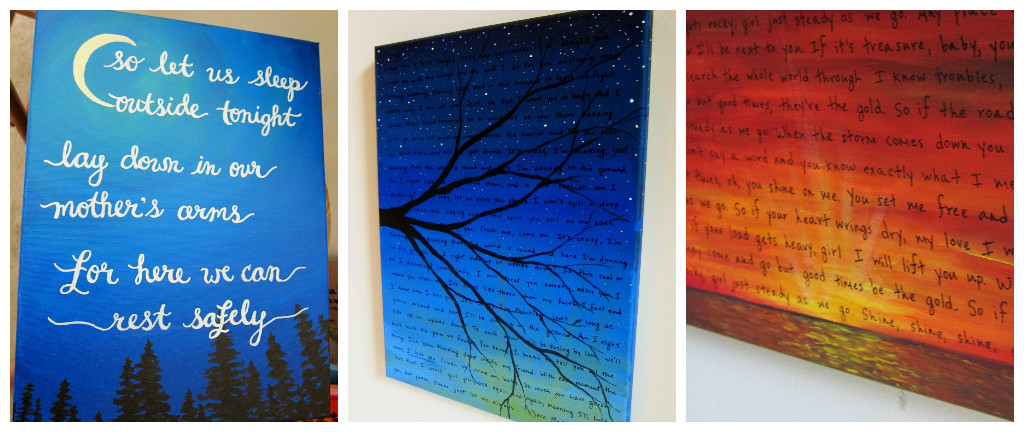
So what do you think of these 3 ways to transfer lettering to canvas? Love them, hate them, can’t wait to try them? Leave me a comment and let me know what you think! And please share, like, pin, or post if you enjoyed this DIY!
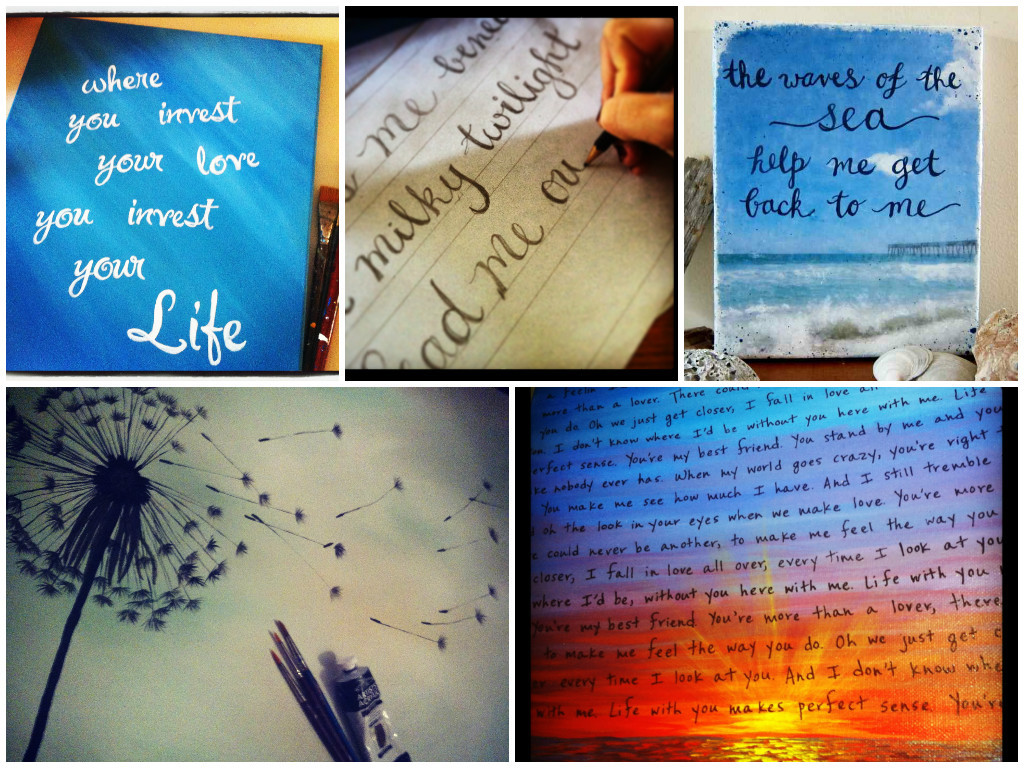

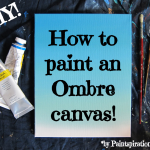
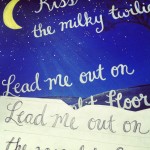

Thanks so much for sharing! Both letter transfer tutorials helped me feel less intimidated about starting the quote projects I’d like to do for my kids’ room. You are sweet to share your techniques 🙂
That’s great Cassie! I’m sure they’ll come out beautiful- good luck! 🙂
Can I use acrylic paint for letters over a dried oil painting?
I’ve always loved the look of canvas. It’s such a unique look. Your collage idea is so great. I’m definitely going to have to try it out! Thanks for sharing.
Our youngest recently moved into his own apartment and asked us to paint and letter inspirational quotes on various size canvas frames in order to help create a cozy and inspirational place to live without having to spend to much to decorate his new place. Your two blog articles provided us with some options to try plus add variety to his home decor. Thus far, location, canvas size, colors, and meaningful quotes have been selected, and we are deciding on which technique of yours to use first. Thank you for sharing your detailed step by step techniques in your two blog articles.
That’s a great idea Barbara! I’m sure it will mean a lot to him, not only because they’re personalized, but also because they’re created by you! Good luck 🙂
What type of paint do you use?
Hi Bridget, I use acrylic paint for these projects because it’s easy to work with and dries fast.
Thank you for sharing your techniques! I am going to use the carbon paper method to make a canvas quote panel for my hubby for Christmas! You are very talented and I appreciate you sharing your techniques!
Do you have an opinion on possibly reusing a large canvas of a cheap décor item from Big Lots or Family Dollar? I was thinking maybe a light sanding first. I want to order the vinyl stickers made to put on walls (cheap on eBay) and try using them like you did in your original post. From what I’ve seen, nobody is actually leaving the vinyl on, but painting or mod-podging over them, then peeling back off. Most people are using boards, but I like the canvas idea both for weight and originality. Thanks for your ideas!
Hi Gina! I’ve reused a cheap canvas before and it worked out okay. I painted a few heavy layers of white gesso over the original image printed on the canvas, then painted on top of that. The quality of the canvas was really bad though, and so the canvas is saggy. I wouldn’t recommend doing this if you’re creating a piece that is time consuming or that’d you’d like to be very nice– you might be better off buying a large canvas from Michaels or AC Moore when they go on sale.
I really love the effect of painting over the vinyl and pulling it off. It gives some great texture and crisp lines. I hope this helps. Good luck!
Thank you 🙂
[…] Paintspiration is Down for Maintenance DIY- 3 (More) Ways to Paint Quotes on Canvas […]
Another method that I’ve used when I didn’t have all the supplies that I’d like to share to other find another way type people lol is a method from on wood, I painted my board with chalkboard paint ( makes it into a chalk board) and lightly stenciled , used vinyl letters and some very steady handwriting ( i have exceptional letter making skills when I can erase) with my son’s very large chalk collection then used fine tip oil based paint markers around some of the letters. Is very easy to erase smudges and mistakes so I loved this method. I finished with a very fine mist of aerosol hair spray (tresemme if must know)and then after that dried I did a coat of polyurethane in a can, that’s all I had at the time so I’m sure there’s other safer things to finish with
I found this so helpful but am still searching for answers on different markers. I am in the midst of creating a canvas for my mom. I painted it black using your advice and now I need to find the perfect markers to write on it. I can find the markers you mentioned so I’m wondering if you have any other recommendations!
Hi Jenna! You should be able to use any paint pen you can find at a craft store. I recommend using acrylic paint (water based) because they dry quickly. You can also use an oil based paint, but remember you cannot paint over oil paint with a water based paint (oil and water don’t mix!).
Why do you paint the canvas before you put the lettering on? I would think you would put the lettering on and then paint, let dry and then peel of the letters.
Hi im getting married and we got a picture of us put on to a canvas and we want our guess to sign it so we can keep but not sure what pen would be best dont want it to bleed when they sign it ?
I am excited about trying out this carbon tracing method. I can’t wait to see if it works. Thanks for sharing your talent.
How do you use the carbon transfer paper over dark backgrounds? I noticed in your middle picture you have some dark background, and I’m wanting to put a quote over a background that will be predominantly black. Any suggestions?
Thanks so much for these ideas.